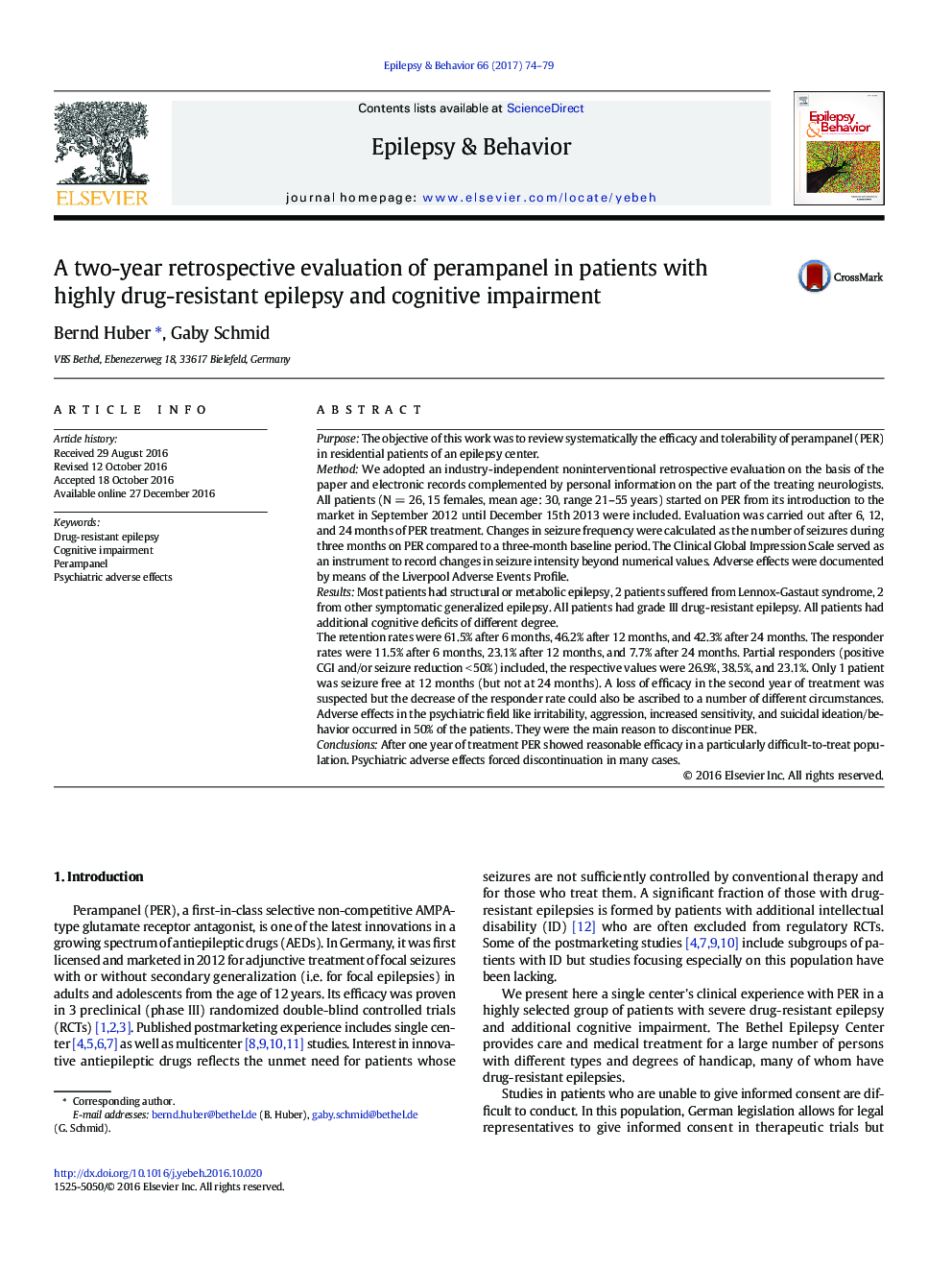| کد مقاله | کد نشریه | سال انتشار | مقاله انگلیسی | نسخه تمام متن |
|---|---|---|---|---|
| 5628012 | 1579826 | 2017 | 6 صفحه PDF | دانلود رایگان |
- Retrospective observational study in 26 adult patients with highly drug-resistant epilepsy and cognitive impairment.
- â¥Â 50% seizure reduction: 11.5% at 6 months, 26.9% at 12 months, and 7.7% at 24 months.
- Partial responders (minor improvements included): 26.9% at 6 months, 38.5% at 12 months, and 23.1% at 24 months.
- Psychiatric adverse effects occurred in every second patient.
PurposeThe objective of this work was to review systematically the efficacy and tolerability of perampanel (PER) in residential patients of an epilepsy center.MethodWe adopted an industry-independent noninterventional retrospective evaluation on the basis of the paper and electronic records complemented by personal information on the part of the treating neurologists. All patients (NÂ =Â 26, 15 females, mean age: 30, range 21-55Â years) started on PER from its introduction to the market in September 2012 until December 15th 2013 were included. Evaluation was carried out after 6, 12, and 24Â months of PER treatment. Changes in seizure frequency were calculated as the number of seizures during three months on PER compared to a three-month baseline period. The Clinical Global Impression Scale served as an instrument to record changes in seizure intensity beyond numerical values. Adverse effects were documented by means of the Liverpool Adverse Events Profile.ResultsMost patients had structural or metabolic epilepsy, 2 patients suffered from Lennox-Gastaut syndrome, 2 from other symptomatic generalized epilepsy. All patients had grade III drug-resistant epilepsy. All patients had additional cognitive deficits of different degree.The retention rates were 61.5% after 6Â months, 46.2% after 12Â months, and 42.3% after 24Â months. The responder rates were 11.5% after 6Â months, 23.1% after 12Â months, and 7.7% after 24Â months. Partial responders (positive CGI and/or seizure reduction <Â 50%) included, the respective values were 26.9%, 38.5%, and 23.1%. Only 1 patient was seizure free at 12Â months (but not at 24Â months). A loss of efficacy in the second year of treatment was suspected but the decrease of the responder rate could also be ascribed to a number of different circumstances. Adverse effects in the psychiatric field like irritability, aggression, increased sensitivity, and suicidal ideation/behavior occurred in 50% of the patients. They were the main reason to discontinue PER.ConclusionsAfter one year of treatment PER showed reasonable efficacy in a particularly difficult-to-treat population. Psychiatric adverse effects forced discontinuation in many cases.
Journal: Epilepsy & Behavior - Volume 66, January 2017, Pages 74-79
